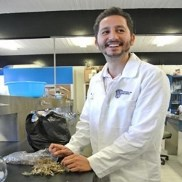Ethnopharmacology in Latin America
A special issue of Pharmaceuticals (ISSN 1424-8247). This special issue belongs to the section "Natural Products".
Deadline for manuscript submissions: closed (24 March 2023) | Viewed by 26383
Special Issue Editor
Interests: pharmacology; medicinal plant; ethnobotany; pharmacy
Special Issues, Collections and Topics in MDPI journals
Special Issue Information
Dear Colleagues,
Latin America is a multicultural region, which encompasses 43 countries, and it was the settlement of many pre-Hispanic civilizations. Their knowledge and culture still remain. This region is the home of over 50 million indigenous people belonging to 400 different ethnic groups. Their ancient knowledge was incorporated into many pharmacopeias from this region. Latin America has many endemic medicinal plants. However, this region is facing a loss of biodiversity. The migration to rural areas is resulting in the loss of ethnomedicinal information. In Latin America, the use of medicinal plants for primary healthcare is a common practice among the general population due to the lack of/insufficient medical attention and the lack of economic resources. Many of these medicinal plants remain to be studied for their toxicology, pharmacology, and chemistry. This Special Issue will be focused on the following topics: (i) ethnobotanical studies using quantitative tools, (ii) survey-based studies about self-medication/use of herbal products, (iii) preclinical and clinical studies with plant extracts and their active compounds, (iv) analytical procedures for the standardization of plant extracts, and (v) legislation and regulation of herbal products. The journal Pharmaceuticals invites experts to contribute to this Special Issue with reviews and original research articles focusing on the pharmacology, toxicology, analytical chemistry, pharmacy, and ethnobotany of medicinal plants endemic to Latin America.
With best regards,
Dr. Angel Josabad Alonso-Castro
Guest Editor
Manuscript Submission Information
Manuscripts should be submitted online at www.mdpi.com by registering and logging in to this website. Once you are registered, click here to go to the submission form. Manuscripts can be submitted until the deadline. All submissions that pass pre-check are peer-reviewed. Accepted papers will be published continuously in the journal (as soon as accepted) and will be listed together on the special issue website. Research articles, review articles as well as short communications are invited. For planned papers, a title and short abstract (about 100 words) can be sent to the Editorial Office for announcement on this website.
Submitted manuscripts should not have been published previously, nor be under consideration for publication elsewhere (except conference proceedings papers). All manuscripts are thoroughly refereed through a single-blind peer-review process. A guide for authors and other relevant information for submission of manuscripts is available on the Instructions for Authors page. Pharmaceuticals is an international peer-reviewed open access monthly journal published by MDPI.
Please visit the Instructions for Authors page before submitting a manuscript. The Article Processing Charge (APC) for publication in this open access journal is 2900 CHF (Swiss Francs). Submitted papers should be well formatted and use good English. Authors may use MDPI's English editing service prior to publication or during author revisions.
Keywords
- Latin America
- preclinical
- clinical
- ethnobotany
- pharmacology
- chemical standardization
- herbal products






